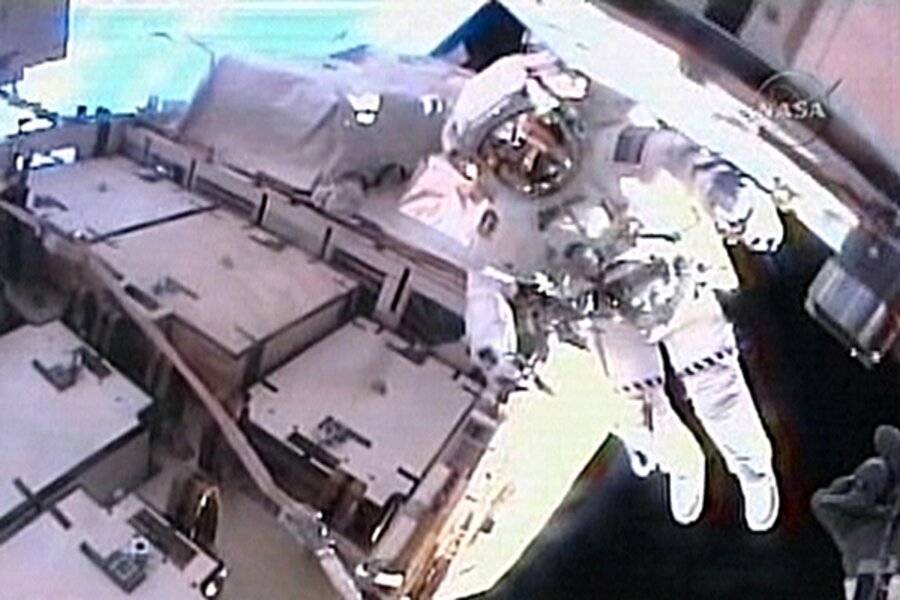Astronauts venture to far end of station on fourth spacewalk
Loading...
| CAPE CANAVERAL, Florida
At Mission Control’s request, a pair of spacewalking astronauts took it slow and easy heading out to the far end of the international space station Friday, then tackled a series of critical battery changes.
Christopher Cassidy and Thomas Marshburn ventured out as the shuttle-station complex soared 220 miles above Kazakhstan. By the time they had circled the planet, 1-1/2 hours later, they had their first fresh battery installed.
“Have fun storming the castle, guys,” astronaut David Wolf called out from inside.
The last time Christopher Cassidy went out, two days earlier, he was so enthusiastic and moved so fast that the air-cleansing canister in his suit could not keep up. That resulted in rising carbon dioxide levels that forced an early end to the spacewalk.
“He’s a Navy SEAL, he’s in great shape, and so we really needed to tell him, ’Hey, we know you can do this really well and really fast ... just slow down a little and take your time,’ “ explained flight director Holly Ridings.
Cassidy and Marshburn took the advice to heart. “Don’t work too hard, Tom, just take your time,” Cassidy told his partner.
Despite Cassidy’s effort to stay relaxed, however, his metabolic rate was a little high at one point and Mission Control gave some of the early battery tasks to Marshburn. That gave Cassidy, a 39-year-old Navy commander, a bit of a break.
“I’m just going to sit here,” Cassidy said. He noted that he wanted the lithium hydrogen canister in his suit — for removing his exhaled carbon dioxide — to operate at its maximum efficiency.
NASA added the unfinished battery work to Friday’s spacewalk, the fourth for shuttle Endeavour’s visiting crew. That pushed the planned length of the spacewalk to 7-1/2 hours, an hour longer than usual.
Cassidy and Marshburn had four new batteries to plug in Friday. Two of those batteries should have been installed Wednesday.
The balky batteries — 3-foot-square bundles weighing about 370 pounds each — are designed to store power collected by the solar wings on the far left end of the space station. Cassidy managed to replace just two of the 9-year-old batteries on Wednesday, while working with Wolf.
Each of the six new batteries costs $3.6 million. The old ones will be returned to Earth aboard Endeavour at the end of next week.
One more spacewalk is planned for Monday.
Cassidy — an explosives and combat expert who went into Afghanistan two weeks after the Sept. 11, 2001, terrorist attacks — said in a series of TV interviews Thursday that he experienced no symptoms of carbon dioxide buildup during Wednesday’s spacewalk and was never worried.
Back at the launch site, meanwhile, NASA conducted more testing on the fuel tank that will be used for Discovery’s launch at the end of August. Shuttle managers want to be absolutely certain that the foam insulation on the central area of the tank was attached properly.
During Endeavour’s liftoff on July 15, an unusually large amount of foam broke off and a few pieces struck the shuttle, causing minor damage.





